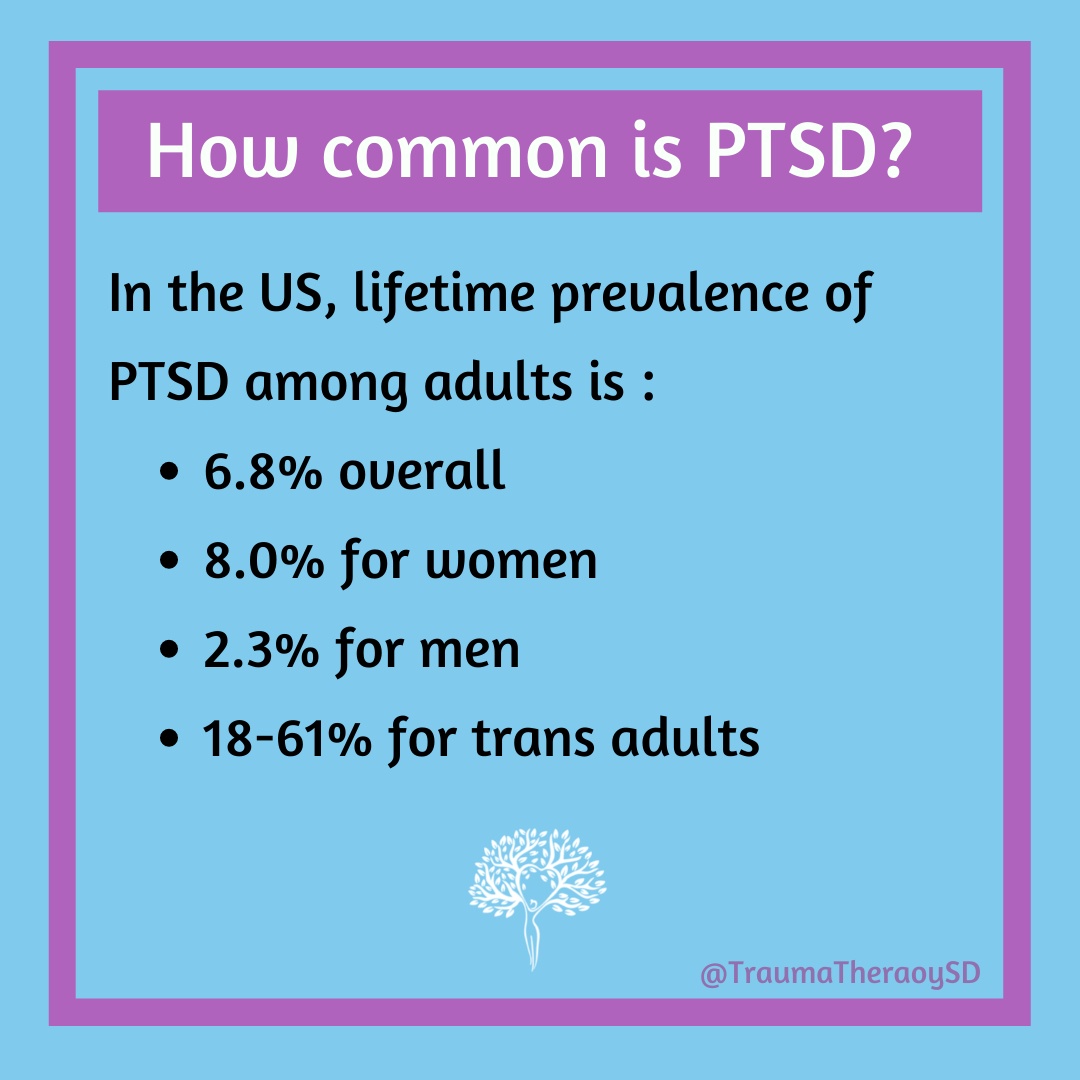PTSD Info

In the US, the lifetime risk for developing PTSD is 6.8% and among those reporting PTSD, 36.6% rated it as serious, 33.1 moderate and 30.2% mild.
When looking at the last year, the prevalence rate of PTSD for women is 8.0%, for men it’s 2.3% and among transgender adults it ranges from 18-61%. There is a range for trans adults due to the varying ways that trans has been defined and studied.
There is mixed and conflicting evidence regarding the rates of PTSD among different racial/ethnic groups. And often the range of gender identities are not included or tracked in large scale studies of mental health.
For adolescents, lifetime risk of PTSD is estimated at 5.0%, for adolescent girls it’s 8.0% and adolescent boys it’s 2.3%.
Symptoms of PTSD typically begin within the first three months after the trauma, although the onset can be delayed by months or years. For about 50% of folks who develop PTSD, the symptoms resolve within 3 months.
The symptoms of PTSD may vary over time and may recur later in life after the person experiences another traumatic event.
PTSD does not mean that the person is weak or broken. It means the traumatic experience got stuck in the brain and nervous system and needs help being resolved.
Sources: NIMH, DSM 5










